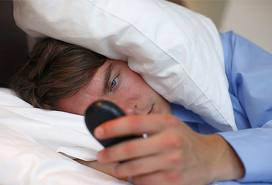Cell Phones
Ten New Studies Detail Health Risks of 5G
Analysis by Dr. Joseph Mercola April 14, 2024
- Several studies published between 2022 and 2024 underscore the health risks posed by 5G technology
- Research contradicts the International Commission on Non-Ionizing Radiation Protection guidelines, demonstrating various harmful biological effects of radiofrequency radiation(RFR) on humans and the environment, including potential cancer risk
- Studies reveal 5G’s potential to induce neurological damage and psychiatric problems, highlighting its effects on brain development, including the increased risk of conditions like dementia through mechanisms such as the impairment of neurosin
- A December 2023 study illustrates the detrimental effects of 5G RFR on rat sperm, showing decreased sperm count and quality, with melatonin offering a protective effect
- February 2024 research indicates significant changes in the fecal microbiome and metabolome profiles in mice exposed to 5G RFR, hinting at broader implications for health, including mental well-being and immune function
Over the past decade, I’ve written many articles discussing the evidence of biological harm from nonionizing electromagnetic field (EMF) radiation and radio frequency radiation (RFR) from wireless technologies.
The video above features an interview I did with Siim Land in February 2020 for his BodyMind Empowerment podcast in which I discuss EMF — what it is, your greatest sources of exposure, how it affects your biology, and how to minimize your exposure. I also review how the telecommunications industry manipulates the truth to keep you unaware of the potential hazards.
While the wireless industry is built on the premise that the only type of radiation capable of causing harm is ionizing — X-rays being one example — researchers have for a long time warned that even nonionizing and non-heating radiation can jeopardize your health. This includes not only human health but also that of plants and animals.
Over time, I became so convinced of the deleterious effects of EMF, that I took three years to write “ EMF*D” which was published in 2020. In it, I reviewed the overwhelming evidence showing EMFs are a hidden health hazard that simply cannot be ignored any longer.
During the pandemic, we also witnessed the rollout and installation of 5G across the country, which has exponentially increased exposures, as it’s added on top of the already existing wireless infrastructure.
The short video below, published by Investigative Europe in January 2019, gives a quick overview of how 5G differs from previous wireless technology. At the time, little if any research had been done on 5G specifically, but between 2022 and 2024, 10 new studies have been published that shed more light on this fifth-generation technology.
Mobile Phones can wreck your sleep
 Phone makers own scientists discover that bedtime use can lead to headaches, confusion and depression
Phone makers own scientists discover that bedtime use can lead to headaches, confusion and depression
20 lowest-radiation cell phones
Choosing a Low Radiation Cell Phone
The amount of radiation absorbed by your body when making a mobile phone call can be measured - this measurement is called the SAR (specific absorption rate) and is a guide to how much electromagnetic radiation you will absorb whem making a call. The higher the SAR the more radiation is absorbed. Choosing a low SAR mobile phone could reduce your exposure by a factor of 2-3 times compared to using a higher SAR phone. See below for tables of of devices with their SAR Values.>
| Rank | Model | SAR (digital) | Carrier |
|---|---|---|---|
| 1 | Samsung Galaxy Note | 0.19 | T-Mobile |
| 2 | Samsung Galaxy Note | 0.27 | Unlocked |
| 3 | Samsung Galaxy Note 2 | 0.28 | Verizon Wireless |
| 4 | Samsung Galaxy S II Skyrocket | 0.3 | AT&T |
| 5 | Kyocera DuraXT | 0.328 | Sprint |
| 6 | Pantech Discover | 0.35 | AT&T |
| 7 | Samsung Galaxy Beam | 0.36 | Unlocked |
| 8 | Samsung Galaxy Stratosphere II | 0.37 | Verizon Wireless |
| 9 | Pantech Swift | 0.386 | AT&T |
| 10 | Samsung Jitterbug Plus | 0.4 | GreatCall |
| 10a | Jitterbug Plus | 0.4 | GreatCall |
| 12 | Samsung Gusto 2 | 0.41 | Verizon Wireless |
| 12a | Kyocera DuraMax | 0.41 | Sprint |
| 12b | Samsung Gusto 2 | 0.41 | Verizon Wireless |
| 15 | Samsung Galaxy Appeal | 0.42 | AT&T |
| 16 | Samsung Galaxy Note 2 | 0.43 | Sprint |
| 17 | HTC One V | 0.455 | U.S. Cellular |
| 18 | LG Optimus Vu | 0.462 | Unlocked |
| 19 | Samsung Galaxy S Relay 4G | 0.47 | T-Mobile |
| 19a | Samsung Rugby 3 | 0.47 | AT&T |
Add a comment